Last week, I wrote an article about a short trip I made over to a racetrack near Spokane, WA, for the BMW CCA Puget Sound club’s online “magazine,” Zündfolge. It’s called “Roadtrip to Qlispé Raceway.” When I re-read it, I realized it was missing some of what mattered most to me about that trip. So I wrote the following. If you happen to read both, which do you like better? Tell me in the comments.
As I crested the rise of the hill and eyed the long straight ribbon of State Route 155 that lay before me—easily 2 miles of empty highway on a quiet road in eastern Washington—my first thought was “I wonder if I could break my top speed?”
Then I looked over at Sara—who was sitting there happily considering the different colors of green and brown flowing by and how she could render them on canvas—and realized that maybe this wasn’t the right time to test my limits, the car’s limits, or my wife’s tolerance.
I’m prone to pressing my limits, on the race track, in the mountains, when I’m running, even when I’m playing Quordle with friends. I always want to see what happens if I push a little harder, go a little faster, get beyond my usual limits. Hell, I shaved my head the other day just to see what it would feel like to be bald for a while. There’s something inside me that says: ignore the rules, do your thing, find your limits.
The race track is a great place to indulge this penchant, as it’s purpose-built for finding limits, however you define them. Some folks are happy just to do away with a speed limit, and to be able to push beyond their normal public-road safety zone. Others are in pursuit of ever-faster lap times, and they’re dedicating serious money and time to the sole purpose of seeing whether they can go a little bit faster by carrying more speed here, or tightening their line there. Some people look at high risk pursuits like this and ask, “Do you have a death wish?” That’s the furthest thing from the truth. I do it because it makes me feel alive.
What I’m after is improvement, learning, and discovery. I want to see what I can find out there on the ragged edge of possibility. And I do believe that the best way to find your limits is to exceed them. That has meant putting two wheels off the track a couple times: exiting Turn 2 at Pacific Raceways and exiting Turn 3 at Laguna Seca. In both cases, I kept control, recovered, and pulled safely back onto the track—as opposed to the horror stories of overcorrecting, turning into the track, and rolling or hitting a wall. What great learning experiences these recoveries are. I’d heard driving instructors tell me what to do—don’t overreact, hold the wheel steady, check your mirrors, and pull back unto the track—but now I got to actually practice it. And so I know what it feels like to push too hard there. It’s settled; I won’t make that mistake again (at least in those specific turns.)
It’s this kind of limit-testing that led to a full-on spin on the vast stretch of pavement coming out of Turn 8 at Pacific, on a day where I kept applying more and more throttle as I exited the turn … right up until I applied too much and found myself spiraling amidst a cloud of tire smoke, both feet in as I came to a halt. Finally stopped, I waved to the turn worker, pulled back onto the track and got back to speed, and said to myself, “So that’s too much!” (When I got back to the paddock good old Don Kitch raised one of his bushy eyebrows at me and said “Let me guess: too much throttle with the wheel turned?”)
I don’t mean to make myself sound like a daredevil and I’m certainly not the fastest or the pushiest guy on the track. I don’t want to wreck my car (as I’ve seen others do) and I absolutely don’t want to endanger anyone else. But I am convinced that a track provides a pretty safe place to test your limits, wherever you set those limits. That’s why track driving is such a thrill.
Another reason track days are so damned much fun is that generally you’re hanging out with other people who are into pushing their limits. No matter where we’re from or our ages, we’ve got a similar urge. When I finally got out to Qlispé Raceway Park the other day—a new track for me, on the opposite side of the state—I didn’t know a soul … but I quickly bonded with my people. They were a motley crew: a handful of guys in their early 20s; a woman my age who slept the night in her Honda Element and had a friend deliver a sport bike for her to ride; a guy in his late 60s who looked like a retired lumberjack and drove a seriously fast Nissan GT-R. I especially dug this group of young guys who were getting their sport bikes out on a track for the first time. As the day went on, I could see their knees getting closer and closer to the ground, finally touching it, as they rounded the corners. Dammit, they were having fun.
Pushing limits doesn’t necessarily have to put you in danger. Like I said, I’ve been trying to push some limits in Quordle and the other five-letter word games. Of course I try to “win” the game, but the real kick for me is to see how fast I can play. I get a kick out of seeing how fast words will assemble in my mind, based on the fewest clues, and it’s a kick when it works out. Of course losing at Quordle isn’t too painful, the stakes are so low.
Another example: on our drive over to Spokane, Sara and I stopped at a “nature trail” that was sadly forgotten (it’s not even shown on the map, though there’s a sign along the road). You could barely see the remnants of a gravel path that led out through the grassland to some interpretive signs. What the hell, we agreed, let’s give it a shot, and we had a wonderful walk through the prairie using the growth pattern of the flowers to guide our way. See what I mean:
This Substack writing as another way of pressing up against my limits. Writing is something I’ve done all my life (like driving), and I know perfectly well how to do it safely. But sometimes it feels as easy as falling off a log, and that can get boring. This Substack allows me to push at the limits—to probe at writing as clearly and honestly as I can.
Hell, I never thought I’d write fiction, but once I wrote the birding story something kind of unlocked in me, and I’ve been working steadily on my longer story about the perils of surveillance in the workplace, and it’s feeling like a novel. Sometimes I feel like I’m way out over my skis on this, writing and revising right up to publication day, and I’m constantly discovering stuff as I write. I used to think it was bullshit when writers would say that characters speak to them and take their story where they wish—but my character Stamper (born from my memories of several people I know) is doing her own thing sometimes and that’s pretty cool. (You can start this story here if you’re interested.)
There are times when I’m writing that it feels a bit like being on a track, pushing my speed coming into a corner, or braking later and later at the end of a long straightaway. I know I can get better—I’ve just got to keep pushing.
How do you find your limits? Where in your life do you push at the edge a bit to find out who you are?
Postscript:
Arthur Brooks wrote an article on this exact subject just this week: “The Magic of a Little Danger,” in The Atlantic. See Mom, I’m not crazy!



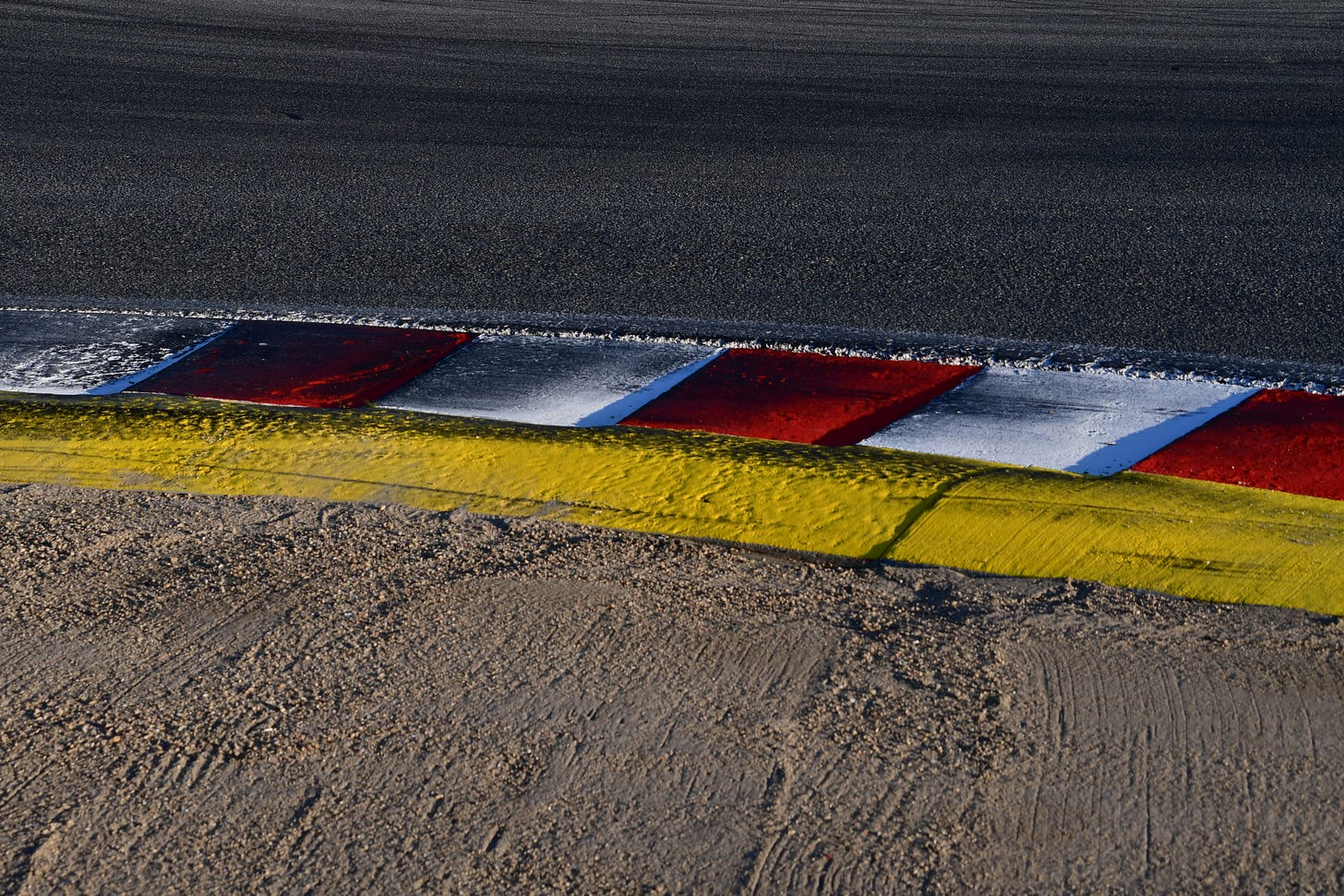
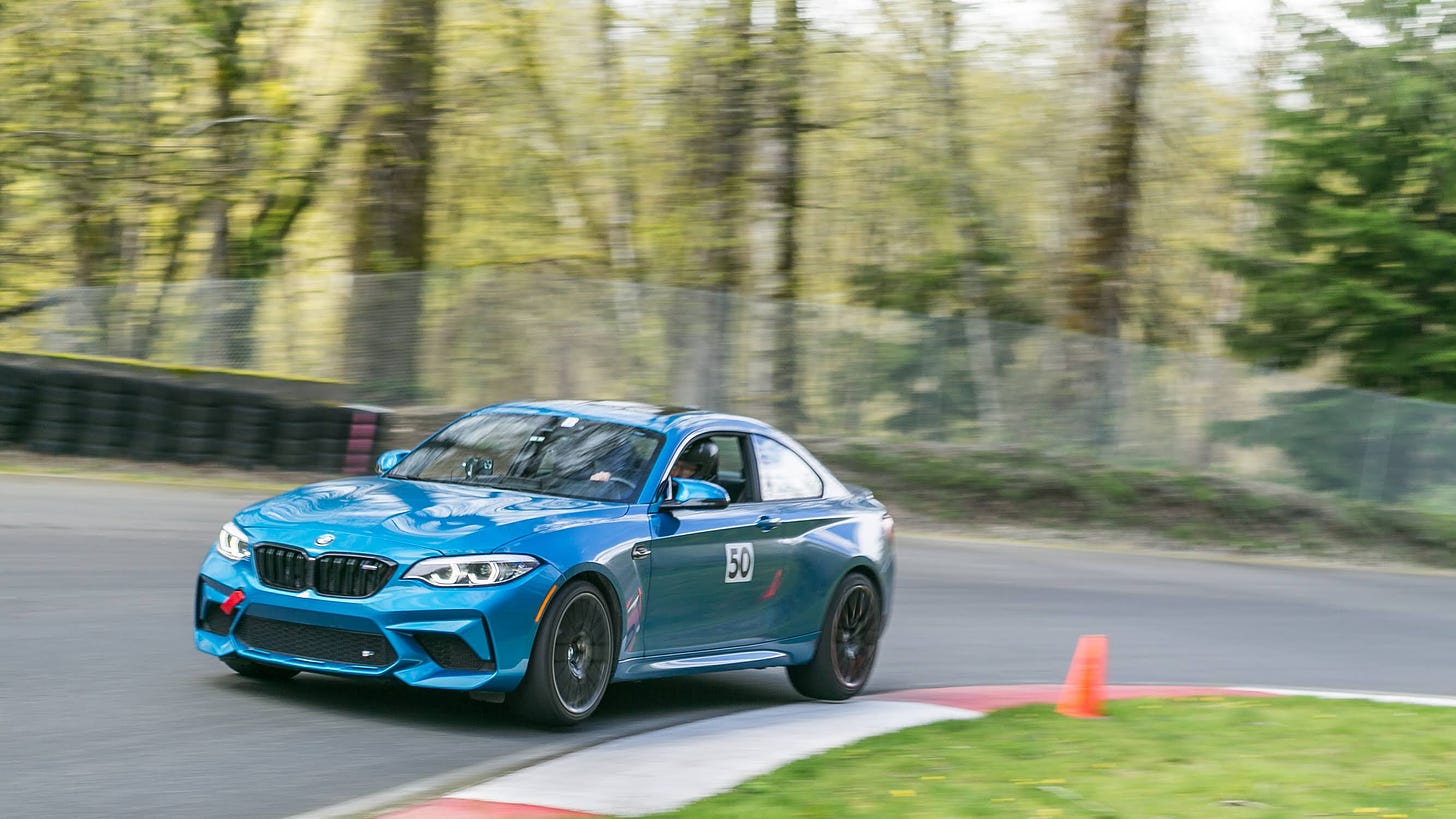
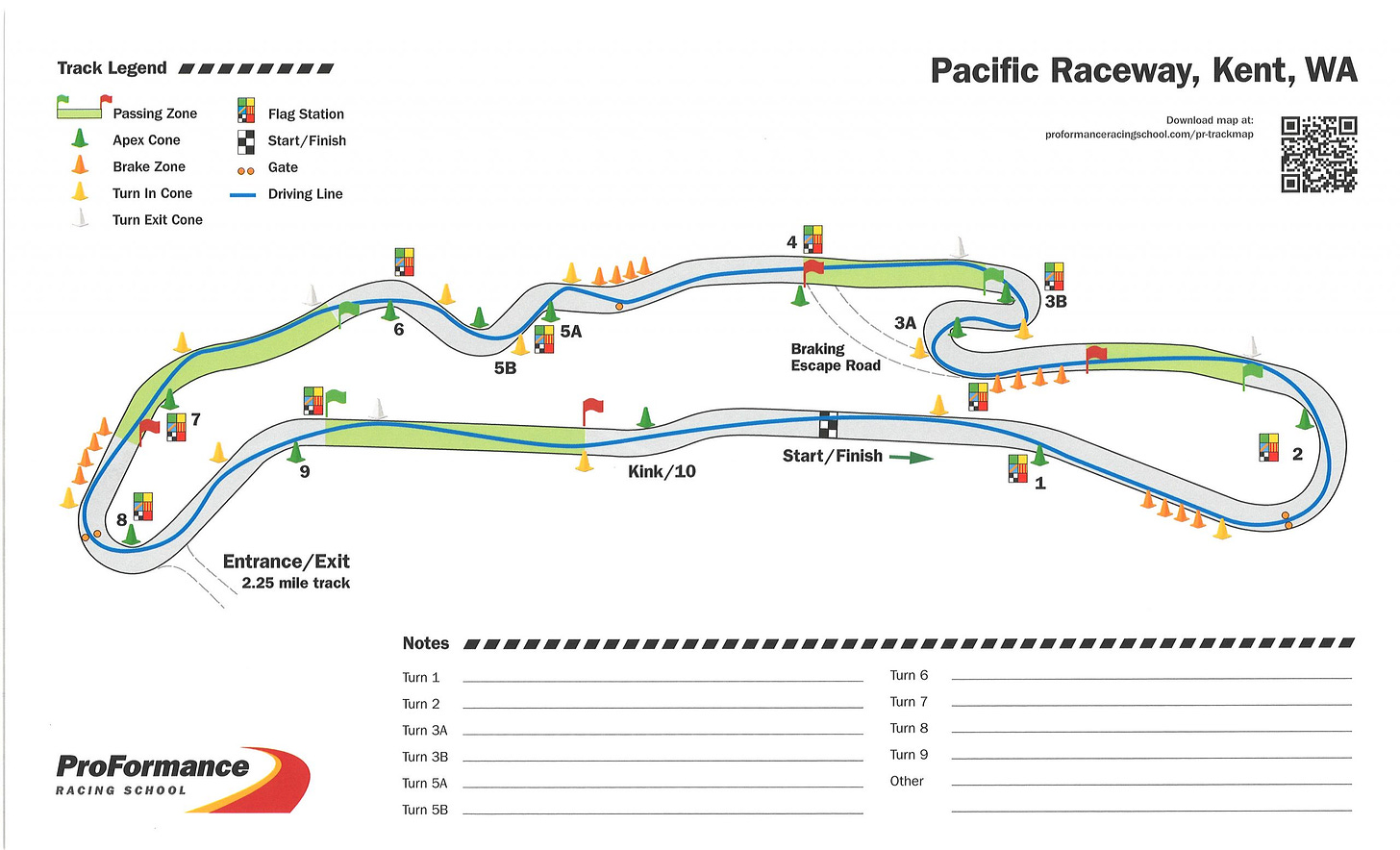
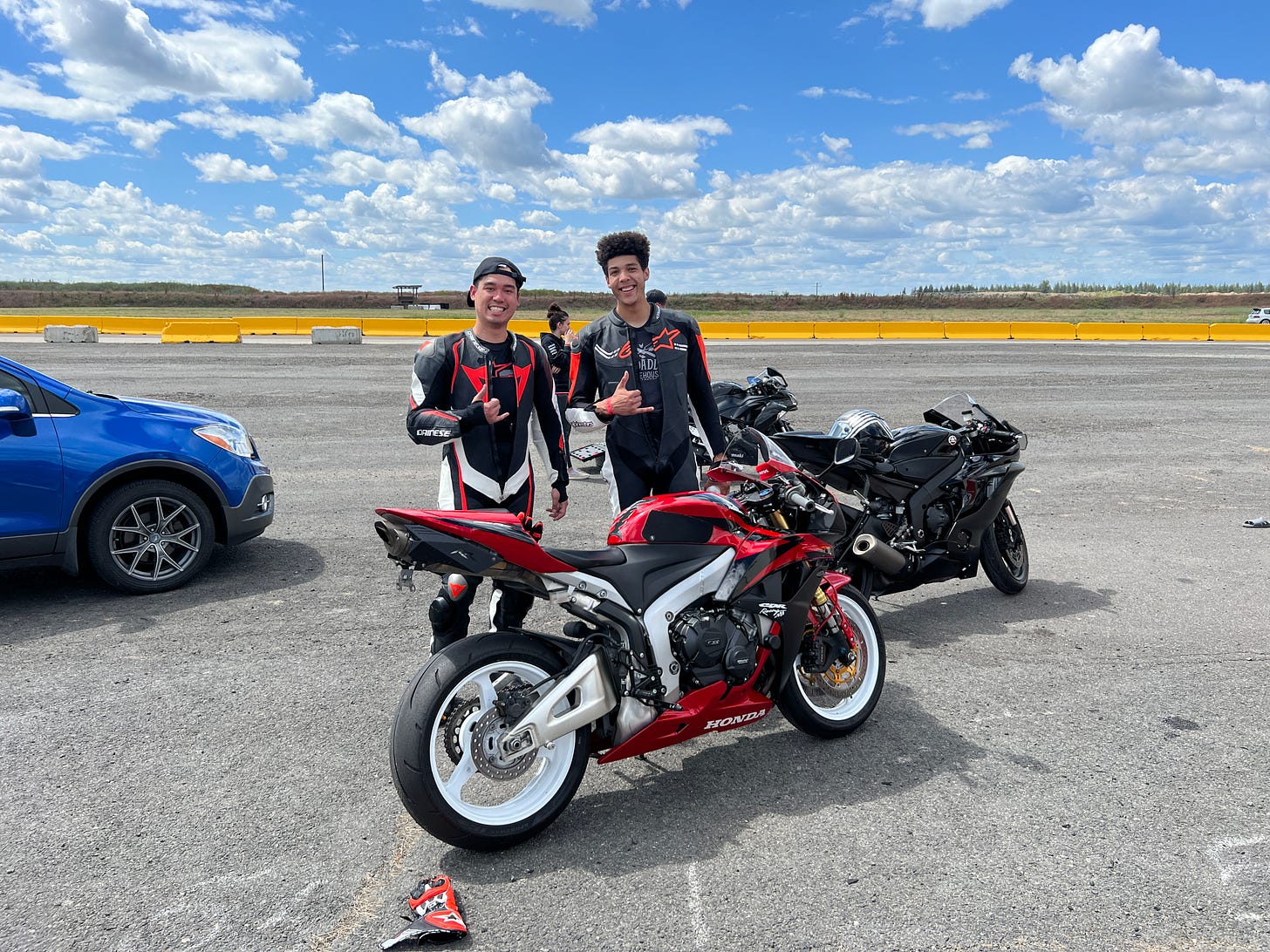
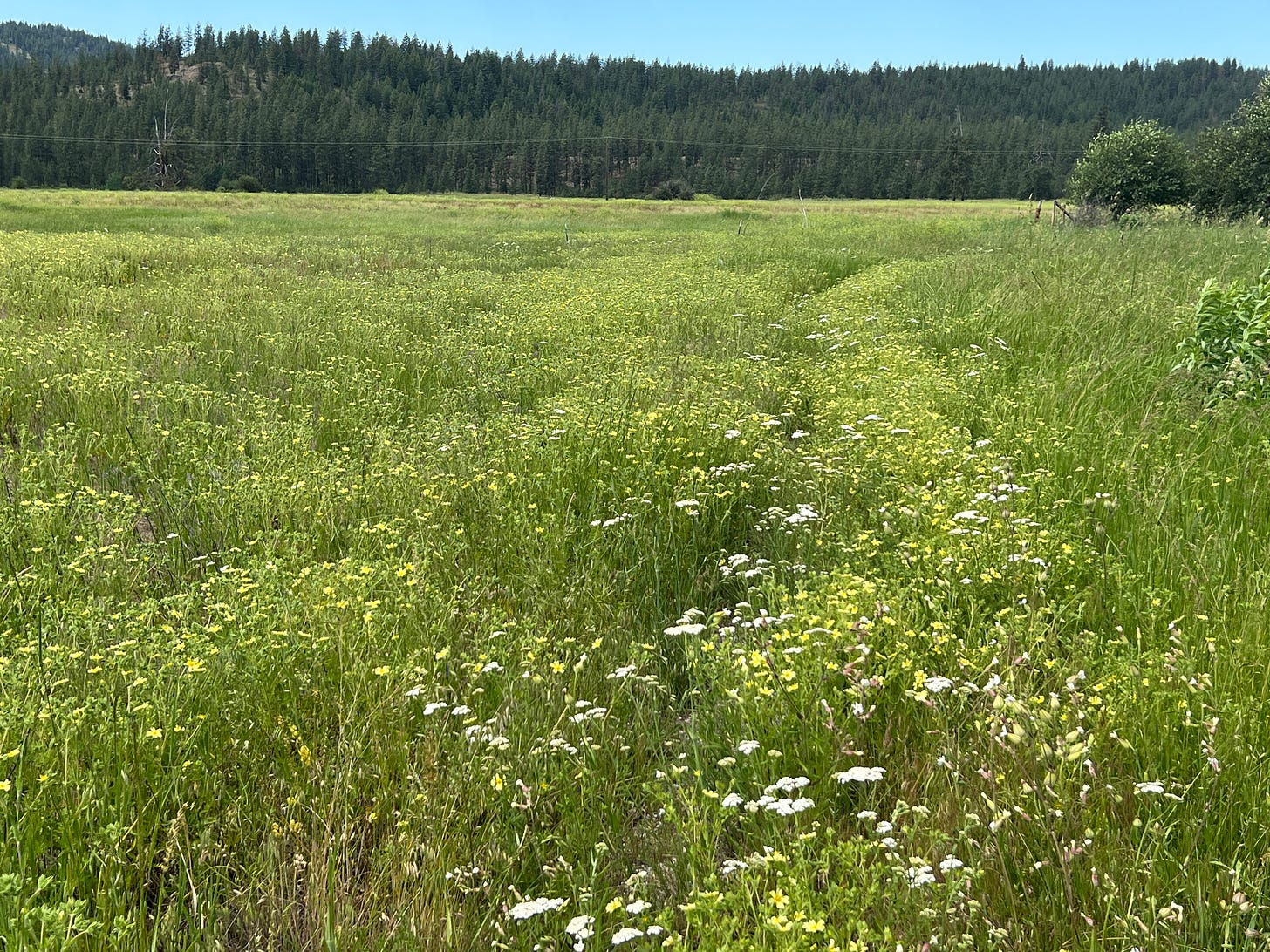
We share a similar yearning to push the limits. A little adventure goes a long way. You never know when these experiences will provide the inspiration needed for another story. I can't remember the last time I truly pushed the limits... it's time to find something.
Love the forgotten nature trail betrayed by the flowers. My brother in law will enjoy this story and news of the track ... for my self, I'm keeping all four wheels on the ground.